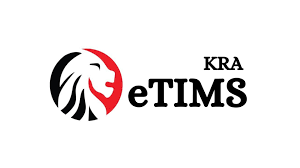A merger is the combination of two or more companies into one entity. An acquisition is when one company buys another company. Mergers and acquisitions can be a good thing or a bad thing, depending on the situation. They can help a company grow or they can destroy a company.
The goal of a merger or an acquisition is to make more money for the shareholders. Sometimes this happens, but often it does not. In fact, about 75% of all mergers and acquisitions fail. There are a few things that you need to know before a merger or an acquisition happens. You need to know the financial condition of both companies, the reason for the merger or acquisition, and the goals of the new company. You also need to know what will happen to the employees of the two companies.
What does an M&A Advisory firm do?
Merger and Acquisition Advisory firms are companies that assist and provide necessary guidance and expertise to those companies that plan to either buy or sell or undertake complete restructuring of their firms. Such firms function like personal financial advisors and can prove to be a game-changer if they effectively execute the transaction on behalf of a company. The process of selling or restructuring a company is cumbersome and needs the help of experts. This is where M&A Advisory Firms come into play and such a firm can be aptly called a “Business Coach” which can steer a company towards a successful corporate deal. M&A Advisory Firms play a crucial role in this era of mergers and acquisitions (or takeover) as it works out a feasible plan and offers their clients tailor-made solutions which simplify the process of mergers and acquisitions.
How do M&A Advisory Firms help in the Sale of Business?
Quicker Turnaround: M&A Advisory Firms play an important role for clients. The biggest advantage is that hiring an M&A Advisory Firm helps in saving time. The company which hires it is not required to do research and everything on its own. The firm does it on the company’s behalf. As the M&A Firm works out all nitty-gritty of mergers and acquisitions in a well-researched and calculated manner, the possibility of its success is high and cannot be ruled out.
Ensures Genuine Buyer: Usually, M&A Advisory Firms have a lot of contacts and business connections that help in getting a suitable buyer. They try to headhunt genuine buyers which would have been difficult for its client to get otherwise. Being a professional body one can trust and rely on the M&A Advisory Firm experts who can find a genuine and Boniface buyer for the business.
Helps in Negotiating Better Price for the Company: M&A Advisory Firm helps a company enter into a right and a worthy deal. Their expertise in analyzing the business potential, gauging the market interest and potential buyers’ interest work together to complete the transaction at the best possible sale price.
Manage anxiety: It’s ideal to shift the stress and hassles of the tedious processes of an M&A transaction to the expertise of an M&A Firm. Delegating these tasks to a professional M&A firm can free you from unnecessary worries about these complex transactions. A highly professional M&A Firm will always try to get you the best deal possible with ease.
A common sticky point is how to deal with employees; when two companies merge, there are usually layoffs because not everyone will have jobs in the new company. When one company acquires another, sometimes the employees of the acquired company are kept on, but often they are laid off. Any deal will have to take into account the effect on the employees.
Types of mergers and acquisitions
There are many different types of mergers and acquisitions. Some of the most common include:
Horizontal merger: A horizontal merger is a merger between firms that operate in the same business sector or market. This can take place between companies that produce the same goods, supply the same service, or sell to the same market. A merger of this type happens when one company absorbs another company and can arise out of either competition or cooperation between the two organizations. A horizontal merger is a type of corporate restructuring.
Vertical merger: The merger of two firms operating at different stages of the same industry. A firm may merge with another firm producing an intermediate product in order to reduce the cost it pays for that product, or it may merge with a firm that buys its product in order to reduce the selling price of its product and thereby increase sales.
Conglomerate merger: A conglomerate merger is an effort of one corporation to take over a smaller firm by purchasing the target’s stock. A tender offer can be made to target shareholders in which the shareholders are able to exchange the shares of the target company for a stated price per share paid by the acquiring company. The acquiring company may also prefer a backdoor merger in which it applies to the target firm’s board of directors for approval.
Congeneric merger: This is a type of business merger in which two companies that produce similar products or services join together. This type of merger can be very beneficial for both businesses, as it allows them to pool their resources and become more competitive in the market.
Tender offer: A tender offer is a corporate action in which the acquiring company (also known as the Offeror) offers a specified price for a specified number of shares of the target company (the Offeree). In return, the acquired target becomes a subsidiary of the acquirer.
Proxy battle: A proxy fight, also known as a proxy battle or proxy contest, occurs when shareholders of a corporation oppose management or the board of directors and try to get other shareholders to change management. In such attempts, opponents of management try to gain enough shareholder support through the solicitation of proxies for their candidate for the board of directors in order to succeed.
Benefits of Mergers and Acquisitions
There are many benefits that can come from a company forming a merger or acquisition with another company. Some of those benefits include:
Increased market share and revenues: When two companies merge, they become one entity with a larger market share than either company had separately. This gives them more bargaining power with suppliers and customers, as well as more revenue streams.
Diversification of products and services: A merger can also lead to the diversification of the products and services offered by the newly merged company. This can be advantageous in terms of risk management, as it reduces the impact that any single product or service might have on the business’s bottom line.
Increased efficiency: Mergers can also lead to increased efficiency within the newly merged company. This can be due to things such as the elimination of duplicate functions or the sharing of best practices between the two companies.
Reduced costs: A merger can also lead to reduced costs for the newly merged company. This is often due to things such as combining headcounts, centralized purchasing, and shared services.
Improved market position: Lastly, a successful merger can improve the market position of the newly merged company. This can be due to factors such as economies of scale, strengthened competitive positions, and enhanced brand equity.”
Tips on how to choose the best M&A Advisory Firm
The following is the list of what to look for when choosing a Merger and Acquisition Advisor. This list summarizes the most important things you should know before signing a contract with an advisor. Knowing these points will help you avoid being taken advantage of by unscrupulous or incompetent advisors who may end up draining your valuable time and money away from your business while not providing any real value in return.
Industry expertise: Make sure that the advisory firm has extensive experience working with businesses similar to yours in terms of size, industry niche, and geographic location. For example, if you have a small manufacturing company based in Southern California then consider starting there.
Size of the firm: Whereas larger firms may be more preferred, keep in mind that a large, bureaucratic organization may not be able to move as quickly or nimbly as a smaller boutique advisor when it comes to completing a deal.
Fees: Ask about what is included in the fee and how it will be charged (hourly rates, success fees, etc.). Also find out if there are any potential additional expenses such as travel costs that you may need to budget for.
References: Request references from current and past clients of the advisor and do your own research into those references. Look for red flags like lots of complaints or lawsuits filed against the advisor.
Relationship with the seller: The advisor should have a good relationship with the seller and be able to get them on board with the deal quickly and smoothly. If there is tension or bad blood between the two parties, it will only delay or even kill the deal.
Deal experience: The advisor should have a lot of experience closing deals in your industry and geography. This experience will come in handy when negotiating terms and finalizing the transaction.
Communication style: Make sure that you are compatible with the communication style of the advisory firm. You’ll want an open line of communication throughout the entire process so that you can ask questions and get updates as needed.
Conclusion
It is important to choose the best M&A advisor before entering into a transaction. An advisor can help you assess your options, negotiate a deal that works for you, and navigate the complex process of completing an acquisition or sale.













